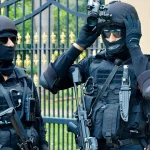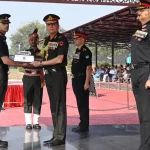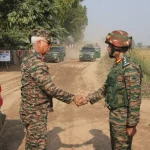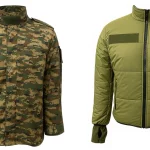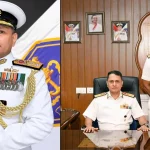The question of whether an Agniveer can become a Para SF Commando opens up a discussion about the evolving dynamics of military recruitment in India, particularly through the lens of the Agnipath Scheme. Launched in June 2022, this scheme aims to modernize the recruitment process for the Indian Armed Forces, targeting a younger demographic to serve in a fixed term of four years. However, while the Agnipath Scheme aims to enhance the operational capabilities of the armed forces through youthful vigor, it simultaneously raises several questions about career progression, particularly for those aspiring to join elite units such as the Para Special Forces.
In this article, we will explore the pathways open to Agniveers in their pursuit of becoming Para SF Commandos, dissect the challenges they face, and outline the rigorous journey from initiation to completion.
Historical Context
The Indian Armed Forces have a storied history, with elite units like the Para SF Commando established to conduct specialized operations ranging from counter-terrorism to unconventional warfare. Traditionally, joining the Para SF has been a privilege reserved for army personnel who have completed extensive service and training. With the introduction of the Agnipath Scheme, the landscape is shifting; this transition to a four-year tenure introduces both opportunity and uncertainty in military careers, particularly with regard to elite combat roles.
The Agnipath Scheme: Recruitment and Tenure
The Agnipath Scheme is designed to revamp military recruitment by attracting younger individuals, aged 17.5 to 21 years, for a four-year tenure in various branches of the armed services. Although many view this initiative as a progressive step towards a more dynamic military workforce, it also brings with it a degree of unpredictability. On one hand, Agniveers may gain invaluable training and operational experience, but on the other, they may find themselves ineligible or uncertain about progressing into specialized roles like those in the Para SF.
A key point of contention is whether the limited tenure aligns with the rigorous training and operational commitments required for elite units. Hence, understanding the pathway from being an Agniveer to a Para SF Commando requires a detailed examination of the recruitment process, the selection criteria, and the grueling training involved.
Joining Para SF: The Basic Requirements
- Initial Army Service:
To volunteer for Para SF, candidates must first enlist as a soldier or officer in the Indian Army. This foundational step is crucial; an Agniveer must transition from general service to specialized roles by first completing standard military training. - Eligibility Criteria:
Candidates must clear initial written exams with a minimum score of 50%.
Physical fitness is paramount, and candidates must excel in endurance testing, as only those who achieve 100% in fitness tests are considered for further evaluations.
The Para SF Selection Process
Becoming a Para SF Commando is not merely a matter of desire; it requires passing a series of intense and competitive selection processes:
Screening Tests
The selection for Para SF is conducted twice a year and includes the following components:
- 40 km Speed March: Candidates must cover a distance of 40 kilometers within a stipulated time frame, testing both physical endurance and mental toughness.
- Cliff Climb and River Crossing: These tests assess both physical ability and skills necessary for operational scenarios.
Combat Skills Evaluation
Candidates must demonstrate competence in various combat skills, which include:
- Precision Shooting: Mastery of firearms is essential for effective combat engagement.
- Close-Quarters Combat: Proficiency in hand-to-hand combat and quick decision-making scenarios plays a critical role.
Physical Fitness Metrics
Candidates are expected to meet stringent physical benchmarks, which include:
- Running 5 km in under 20 minutes.
- Completing at least 14 chin-ups.
- Performing 40 push-ups within a minute and 80 sit-ups in two minutes.
The physical fitness aspect of the selection is crucial, as candidates not only compete against one another but also against the expectations of a highly demanding role.
Psychological Evaluations
This component tests mental resilience under stress, ensuring that candidates can maintain composure in combat situations. Mental toughness is just as important as physical prowess in special operations.
The Intensive Training Regimen
Once selected, successful candidates undergo rigorous training at the Special Forces Training School (SFTS) in Nahan, Himachal Pradesh. This training lasts between three to six months and covers various critical areas, including:
- HALO/HAHO Parachute Jumps: High Altitude, Low Opening and High Altitude, High Opening parachuting techniques are essential for special operations.
- Jungle Survival Techniques: Men and women in special forces need to be equipped to survive in challenging environments.
- Mountain Assaults and Desert Operations: Training scenarios simulate real-world conditions faced by commandos.
Following initial training, candidates enter a six-month probation period, which includes live field validation. This phase helps gauge their ability to apply learned skills under real operational conditions.
Challenges Faced by Agniveers
Despite the potential for an Agniveer to pursue a career as a Para SF Commando, several hurdles complicate this aspiration:
- Short Tenure:
The four-year service limit may restrict Agniveers from completing the extensive training and probation period required for Para SF. Completing the full journey from an Agniveer to a fully qualified Para SF Commando can span beyond the four-year commitment, presenting a formidable challenge. - Uncertain Policy Framework:
As of now, the Indian Army has not explicitly outlined policy measures concerning the eligibility of Agniveers for specialized units like Para SF. Without clear guidelines, aspiring Agniveers face uncertainty regarding their career trajectories. - Physical and Mental Endurance:
The rigorous standards set for Para SF selection and training require relentless dedication, stamina, and psychological resilience, all of which can be particularly demanding given the time constraints imposed on Agniveers. - Completion Rates:
Historically, only about 12-15% of volunteers manage to complete the Para SF training and earn the coveted “Balidan” badge. This high attrition rate indicates the extreme difficulty of the program, further emphasizing the level of commitment required from the candidates.
Comparative Analysis: Traditional Soldiers vs. Agniveers
While the pathway to becoming a Para SF Commando is challenging for all candidates, it poses particular issues for Agniveers:
- Service Duration: Traditional soldiers serve for longer periods, providing them ample time to undergo the rigorous training and probation necessary for elite roles. Agniveers must achieve this in a fraction of the time.
- Career Longevity: Soldiers with longer commitments can plan their careers towards more specialized roles distinctly rewarded within a traditional military framework.
- Financial Stability: Regular army personnel may have more financial security post-service, while those designated under the Agnipath scheme face uncertainties regarding their future after four years.
Future Trends and Considerations
The future of military recruitment, particularly for elite roles like the Para SF, will likely depend on evolving policy frameworks and the adaptability of the Agnipath Scheme. As the Indian Army adapts to the modern security landscape, it may introduce structural changes that could affect recruitment and career progression.
- Policy Developments:
Further clarifications on pathways for Agniveers to pursue specialized roles may soon materialize, given ongoing discussions about military preparedness. - Training Enhancements:
The introduction of more comprehensive training programs focusing on fast-tracking Agniveers into specialized units could emerge as a solution to current challenges. - Public Sentiment and Security Needs:
As the security environment evolves, the need for elite commandos may lead to revised recruitment strategies that embrace the unique qualities offered by the Agniveers.
Conclusion
While it is conceivable for an Agniveer to aspire to become a Para SF Commando, the complexities and challenges inherent in this journey cannot be underestimated. The stringent physical and mental demands, combined with the Agnipath Scheme’s unique constraints, create an environment that is both competitive and unpredictable. The potential for future policy refinements may offer clearer pathways for aspiring commandos, making their ambitions not only possible but also plausible.
Agniveers inspired by this challenging yet prestigious career path must remain steadfast in their preparations, embracing the robust training and relentless endurance required. As they navigate through these uncertainties, the aspiration to don the Para SF insignia remains a remarkable testament to their dedication and commitment to the nation.








